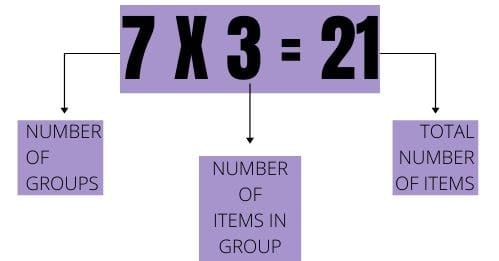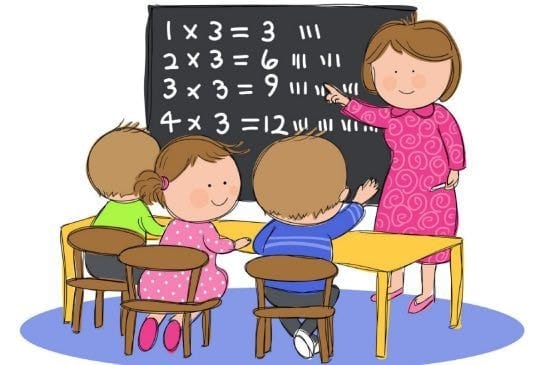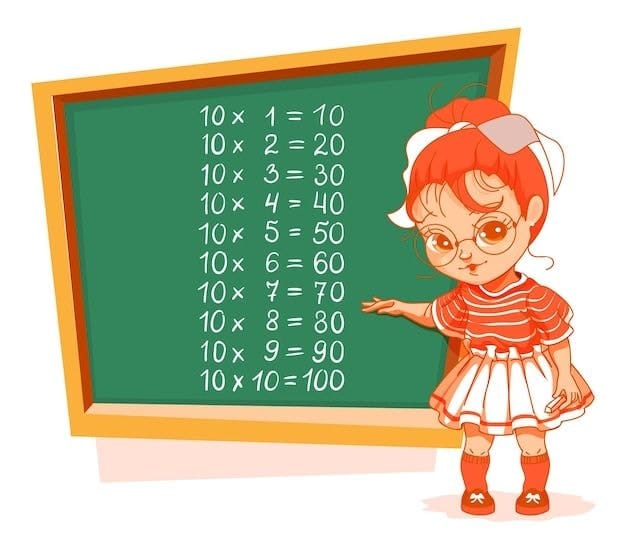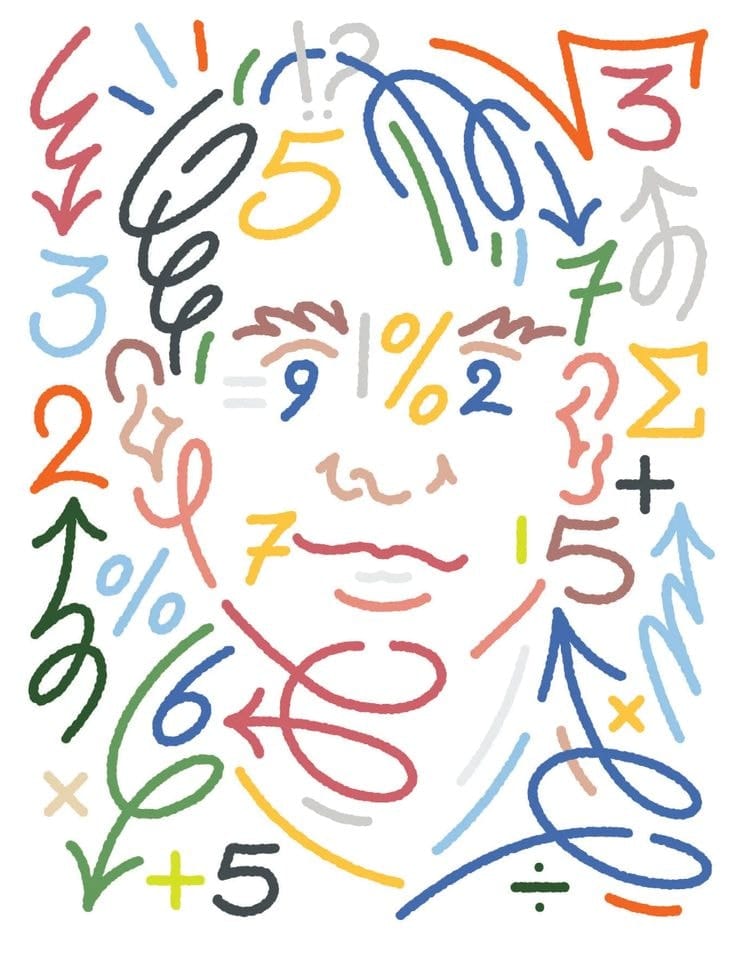How Multiplication Chart of 1-20 Help Children?
How Multiplication Chart of 1-20 Help Children?

Introduction
A multiplication chart is a graphic representation that organizes numbers into rows and columns to show their products. This simple but powerful tool is important in early math education as it helps children learn and internalize multiplication facts. A chart spanning from 1 to 20 (20 tables) is particularly valuable since it covers not only the basic multiplication but also prepares the students for complex calculations with bigger numbers.
A multiplication chart is essential because it enables one to learn and practice multiplication in a structured way, thereby making them have a good foundation in arithmetic. On close study of the chart, the children will realize the patterns, like commutative property, such as (4 times 5 = 5 times 4), thus increasing their conceptual understanding. It provides fundamental knowledge which gives a gateway towards advanced levels to fractions, decimals, algebra and even the practice of problem solving in actual problems that may face anyone.
Using multiplication table chart helps improve calculation speed and accuracy, which are very important skills for academic success and daily life. It reduces the cognitive load during problem-solving, allowing students to focus on higher-order thinking instead of basic computations.
For example, knowing multiplication facts fluently can simplify tasks like calculating areas, understanding ratios, or working on maths tables with percentages. Learning multiplication tables can indeed help in doing quick calculations and it can avoid mistakes while doing the questions related to find the product and long multiplication.
Parents and teachers are very important in promoting the use of the multiplication table charts in early education. They integrate these charts into practice routines, games, or visual aids in classrooms to create an engaging and supportive learning environment. A multiplication table chart is not just a memorization tool; it's a gateway to mathematical fluency, confidence, and the ability to approach complex concepts with ease. It can simplify the process of solving complicated arithmetic calculations.
Building a Strong Foundation with the Charts of Multiplication

The charts of multiplication are also known as times tables charts and these are some excellent tools to represent the process of multiplication for children, hence making the abstract concepts structured. The charts organized in top rows and left most columns convert those abstract ideas to a concrete object that can easily be comprehended. It establishes multiplication as repeated addition and patterns it reveals, which makes it less complicated. For example, children can quickly see how multiplying by 2 results in doubling numbers or how multiples of 5 always end in 0 or 5. These insights not only simplify the learning process but also build a deeper understanding of math fundamentals.

It gives the number sense to children that how a number multiplied by two numbers or same number and two numbers can lead to the resulting multiplication table.
Benefits of Charts of Multiplication:
Simplicity
A printable multiplication chart breaks down complicated thoughts by depicting relationships between numbers clearly and systematically. Children will find easy patterns like the symmetry in a chart, so they can grasp concepts such as the commutative property in the case of (3 times 4 = 4 times 3). The concept is easier and less scary, especially for early learners who struggle with math concepts.
Engagement
Learning with multiplication charts is interactive and fun. It allows children to play games, solve puzzles, or even practice to make the task fun and memorable. This interactive nature keeps them motivated and eager to learn, changing a potentially mundane task into an entertaining and fulfilling experience. This approach let kids achieve the right answer.
Retention
Using multiplication charts repeatedly will help children commit the multiplication facts to memory. By reviewing the chart, they will reinforce their knowledge many times over, which helps them remember the times tables much faster and with fewer errors. It is on this basis that further mathematical fluency is built upon to help children face more challenging topics with ease.
Multiplication table chart help children internalize multiplication as a combination of repeated addition and pattern recognition, thus providing a strong foundation for mathematical success. They bridge the gap between theory and practice, making learning both effective and enjoyable. Parents and teachers should actively encourage the use of these charts in early education, as they are not just tools for memorization but also gateways to a deeper understanding of math.

Charts of multiplication help children internalize multiplication as a combination of repeated addition and pattern recognition, thus providing a strong foundation for mathematical success. They bridge the gap between theory and practice, making learning both effective and enjoyable. Parents and teachers should actively encourage the use of these charts in early education, as they are not just tools for memorization but also gateways to a deeper understanding of math.
Foundation for Strong Mathematical Skills

A multiplication chart of 1-20 is a versatile learning tool that helps children build a strong foundation in math. By presenting multiplication facts in a structured and visual format, it simplifies complex concepts and makes learning more engaging. Here’s how a 1-20 multiplication chart supports children’s mathematical development.
Improved Calculation Speed

Practicing with a multiplication chart of 1-20 enhances a child’s speed and accuracy in solving math problems. With frequent use, children internalize multiplication facts, reducing the time needed for calculations. This fluency not only helps in academic settings but also equips children to handle everyday tasks like budgeting, measuring, or calculating time. Furthermore, mastery of multiplication facts is a key advantage in competitive exams, where speed and accuracy are critical.
Children must learn tables 1 to 10 and 1 to 20 in order to understand all the tables which will be a part of their academic curriculum.
Enhanced Pattern Recognition

A times table chart reveal mathematical patterns, such as sequences of even and odd numbers or the repetitive nature of multiples. For instance, children can observe that the products of 5 always end in 0 or 5, while those of 9 follow a unique digit-sum pattern. Recognizing these patterns makes math more intuitive and lays the groundwork for higher-level concepts in algebra and geometry, where patterns and relationships play a central role.
Visual Learning Aid

For many children, especially younger learners, visual tools like a multiplication chart make abstract concepts more tangible. The structured grid format provides clarity, helping children see how numbers relate to one another. This approach is particularly effective for visual learners who thrive when presented with images and organized layouts, fostering deeper understanding and retention.
Reduction of Math Anxiety

Consistent practice with a multiplication chart of 1-20 builds confidence and reduces fear of numbers. As children become familiar with the chart and recognize their growing proficiency, they feel less intimidated by math. This confidence encourages a positive attitude toward learning and minimizes the anxiety often associated with solving math problems and arithmetic calculations.
Supports Advanced Mathematical Concepts

Mastering the maths tables through a 1-20 multiplication chart is critical for tackling advanced math topics like fractions, decimals, ratios, and algebra. Understanding these foundational concepts ensures children can confidently navigate more complex mathematical problems in the future. A solid grasp of multiplication also improves problem-solving skills, which are essential for long-term academic success and real-world applications.
By introducing children to a multiplication chart of 1-20 early on, parents and teachers can set them on a path to mathematical fluency. This tool not only simplifies learning but also cultivates a deeper understanding of numbers, making math an enjoyable and rewarding experience. Learning tables is the constant process of practicing multiplication. A maths program assists kids in achieving the goal of find the product. Kids understand the meaning of questions in which they are asked 10 times of what number.
About Codeyoung

Codeyoung’s math program is designed to nurture a strong mathematical foundation in children through interactive and engaging lessons. The program focuses on core concepts like multiplication, problem-solving, and advanced topics, ensuring children develop confidence and critical thinking skills. With experienced instructors and a personalized approach, Codeyoung helps students excel academically and enjoy learning math.
Parents in the USA and Canada can easily enroll their kids in Codeyoung’s math program through their user-friendly online platform. By visiting the official website, parents can explore course options, schedule a demo class, and choose a plan that suits their child’s learning needs.
To experience the program firsthand, parents are encouraged to book a free trial class, where their child can explore the engaging teaching methods and see how Codeyoung makes learning math exciting and effective.
Charts of Multiplication - FAQs
How does using charts of multiplication benefit children in math?
1. Simplify Complex Problems: Break down large multiplication problems into smaller, manageable steps.
2. Reinforce Patterns: Help children identify and understand patterns like even/odd sequences and multiples.
3. Enhance Memorization: Facilitate memorization of multiplication tables to aid in recalling the results at hand.
4. Improving Problem-Solving Skills: Reference for solving math problems in everyday life.
5. Gain Confidence: Create a sense of accomplishment and minimize math anxiety with regular practice.
What makes the multiplication chart of 1 to 20 an effective learning tool?
Times tables charts of 1 to 20 is an extremely effective learning tool because it offers a wide and comprehensive range of times tables, enabling children to master basic multiplication while extending their skills to handle larger numbers. Unlike the standard 1 to 10 chart, this expanded chart prepares students for more advanced math tasks by exposing them to a broader set of calculations. This all-around coverage is most helpful in reiterating multiplication facts and establishing the speed and accuracy required in both everyday mathematics applications and in academic challenges.
The times table chart is structured and visual, making it easy for children to understand the relationships between numbers. For instance, they can see how multiples of 2, 5, or 10 follow predictable patterns, which makes learning easier. It also introduces them to key mathematical properties, such as commutativity, for example, (12 times 15 = 15 times 12), which further enhances their understanding of multiplication.
Using a 1 to 20 multiplication chart helps the child develop fluency in their calculations and provides them with a solid foundation for tackling advanced math topics, such as fractions, ratios, and algebra. The extended range of the chart ensures they can confidently work with larger numbers, which is especially useful for real-world applications like budgeting, measuring, or solving word problems.
Overall, a multiplication chart of 1 to 20 is a versatile and practical resource that not only simplifies learning but also equips children with the tools they need for long-term mathematical success. Parents and teachers can use this chart to make learning multiplication more engaging, interactive, and effective.
Why should my child use a charts of multiplication example for practice?
Describe how examples in a chart reinforce concepts and encourage practice, enabling better retention.
How does the multiplication chart 1 to 20 help in daily math tasks?
Why Your Child Should Use a Multiplication Chart Example for Practice
Reinforces Understanding: Examples help solidify the concept of multiplication as repeated addition.
Encourages Pattern Recognition: Identifying patterns in the chart enhances logical thinking.
Simplifies Learning: Breaks down complex problems into smaller, more manageable steps.
Improves Memorization: Regular practice with examples aids in retaining multiplication facts.
Boosts Confidence: Familiarity with charts builds confidence in solving problems quickly.
Supports Self-Learning: Acts as a reference guide for independent study and practice.
Strengthens Problem-Solving: Provides a tool to approach real-life math applications.
Enhances Speed and Accuracy: Regular use improves calculation efficiency over time.
Alleviates Math Stress: Familiarity with examples creates a positive association with math.
Prepares for Advanced Concepts: Lays a strong foundation for topics like fractions, ratios, and algebra.
What age group benefits the most from using multiply tables charts?
Children aged 7–12 most benefit from using multiplication charts because they learn formal multiplication at school. At that age, students are introduced to the basic concept of multiplication. It is an ideal time for them to utilize charts to build on the newly acquired skills.
The visual structure of a multiplication chart helps children understand patterns, improve calculation speed, and memorize times tables. Through regular practice with the same printable multiplication chart, they develop a strong math foundation that supports future learning in math and other academic subjects.
How often should children practice using the multiplication chart of 1 to 20?
Recommended Daily Practice Schedule for Using the Multiplication Chart of 1 to 20
10-15 Minutes Daily: Set aside a short, consistent practice session each day.
Warm-Up with Repetition: Start by reviewing basic times tables (1-5) before moving to more complex ones.
Practice Multiplying Random Numbers: Mix up the numbers for a more dynamic learning experience.
Use Games and Quizzes: Make practice fun with timed challenges or memory games.
Track Progress: Encourage children to mark off mastered times tables to see improvement.
Integrate into Routine: Parents can review charts at home, while teachers can incorporate them into class exercises.
Weekly Review: Dedicate one day a week to review the entire chart for retention.
How can the multiplication chart from 1 to 20 make math less intimidating for children?
The multiplication chart from 1 to 20 can make math less intimidating by providing a clear and structured way for children to approach multiplication. It breaks down large problems into smaller, more manageable steps, which reduces the overwhelming nature of math. When children see the numbers laid out in front of them, they can more easily grasp patterns and relationships, making the process feel less abstract.
Confidence Building: Consistent practice with the chart allows children to master multiplication facts, giving them a sense of achievement.
Reduced Anxiety: Familiarity with the chart makes math feel more approachable, easing any fear or hesitation.
Positive Reinforcement: As children improve their skills and recall facts faster, they gain confidence in their abilities.
Motivation to Progress: The visual success of checking off mastered times tables encourages continued learning and progress.
Comments
Your comment has been submitted successfully!